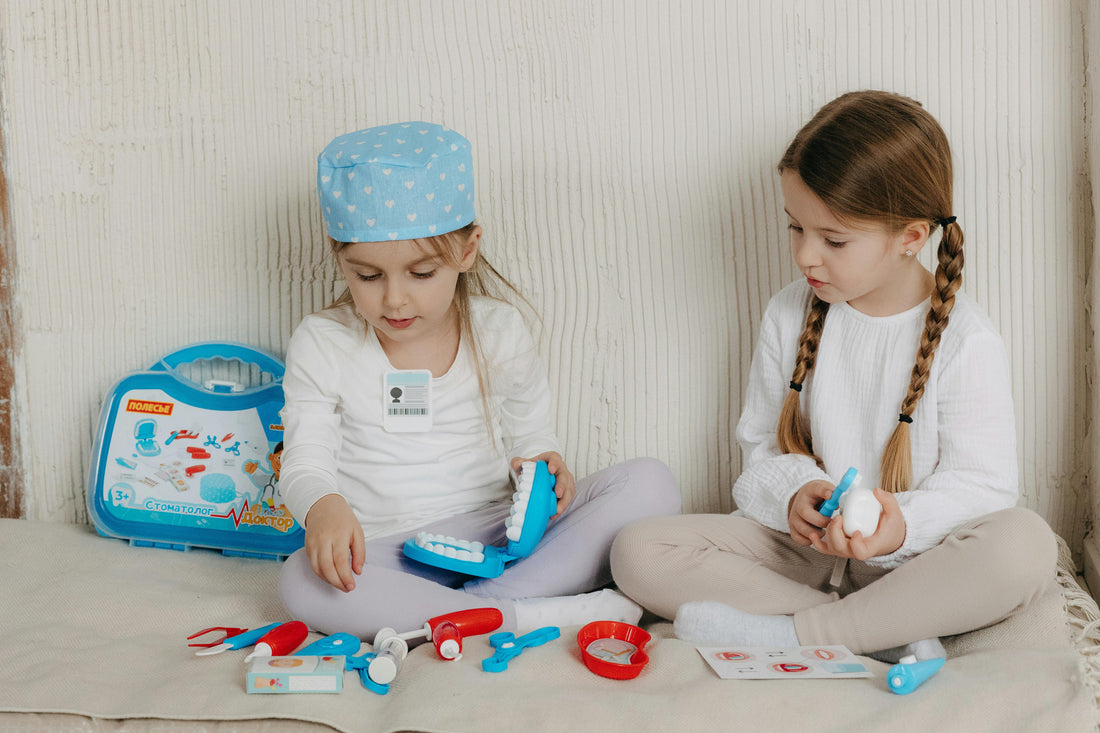
Age-by-Age Guide for the Best Toys for each Stage of Human Lifecycle
Share
Toys can play an important role in each stage of the human life cycle, contributing to cognitive, emotional, and physical development. Here’s a list of toys suitable for each stage:
1. Infancy (Birth to 2 years)

During infancy, toys should focus on sensory development, motor skills, and simple cognitive tasks.
-
Rattles: Help develop auditory skills and hand-eye coordination.
-
Soft plush toys: Provide comfort and stimulate tactile senses.
-
Teething toys: Help soothe gums during teething.
-
Play mats and activity gyms: Encourage reaching, grasping, and crawling.
-
Stacking toys and nesting cups: Enhance fine motor skills and hand-eye coordination.
-
Soft books with textures: Stimulate sensory exploration and early language skills.
-
Shape sorters: Help develop problem-solving skills and hand-eye coordination.
Recommendations from Evergreen: Balloon car, Crab Bubble Camera, Rocking & Riding Pony
2. Childhood (Ages 2 to 12)
Childhood can be further divided into early and middle childhood, each requiring toys that cater to different developmental needs.
Early Childhood (Ages 2 to 6)

Toys should encourage imagination, creativity, and early learning.
- Building blocks and LEGO sets: Promote creativity, spatial skills, and fine motor coordination.
- Pretend play toys (e.g., play kitchens, doctor kits): Foster imagination, role play, and social skills.
- Puzzles (simple): Develop problem-solving skills and hand-eye coordination.
- Art supplies (crayons, washable markers, clay): Encourage creativity and fine motor development.
- Ride-on toys (tricycles, balance bikes): Enhance gross motor skills and balance.
- Musical instruments (xylophones, drums): Develop auditory skills and a sense of rhythm.
Recommendations from Evergreen: Interlocking magic Blocks, My Guitar, Kitchen Set, Play Doh Double Dessert Set, Dinosaur Puzzle
Middle Childhood (Ages 6 to 12)

Toys should encourage more complex thinking, social skills, and physical activity.
- Board games: Teach strategy, cooperation, and turn-taking.
- STEM kits (science experiments, robotics): Encourage critical thinking and interest in science and technology.
- Sports equipment (balls, jump ropes, bicycles): Promote physical activity and teamwork.
- More complex puzzles and construction sets: Develop problem-solving skills and fine motor coordination.
- Action figures and dolls: Foster imaginative play and storytelling.
- Remote control cars and drones: Enhance coordination and understanding of technology.
Recommendations From Evergreen: Boxing Game, Drawing Easel, UNO, RC Formula Drift car, Frozen Castle
3. Adolescence (Ages 12 to 18)

In adolescence, toys and activities should support social interaction, hobbies, and skills development.
- Video games and gaming consoles: Encourage strategic thinking and can be a social activity (when playing multiplayer games).
- Hobby kits (model building, crafting kits): Develop fine motor skills and creativity.
- Musical instruments (guitars, keyboards): Encourage musical skills and self-expression.
- Sports equipment: Support physical activity and team sports participation.
- Board games and card games: Encourage social interaction and strategic thinking.
- Educational kits (advanced robotics, programming kits): Develop interest in technology and problem-solving skills.
- Art supplies (professional-grade): Foster advanced creative expression.
Recommendations From Evergreen: Exploration of Switch set, Electronic Keyboard, 3D Model Eiffel Tower Building set
4. Adulthood (18 and older)
Adults generally do not play with toys in the traditional sense but may engage in hobbies and activities that provide enjoyment and relaxation.
- Board games and card games: Encourage social interaction and strategic thinking.
- Puzzles (jigsaw puzzles, brain teasers): Provide mental stimulation and relaxation.
- Sports equipment: Encourage physical fitness and team activities.
- DIY and crafting kits: Provide a creative outlet and hands-on engagement.
- Collectibles and model kits: Cater to hobbies and interests.
- Virtual reality (VR) headsets and gaming consoles: Offer immersive entertainment and relaxation.
- Musical instruments: Provide a means for relaxation and creative expression.
5. Old Age (65 and older)
Toys and activities for older adults can help maintain cognitive function, provide relaxation, and encourage physical activity.
- Puzzles and brain games (crosswords, Sudoku): Help maintain cognitive function and mental sharpness.
- Gentle exercise equipment (resistance bands, light weights): Encourage physical activity and strength.
- Art and craft supplies: Provide a creative outlet and help with fine motor skills.
- Tabletop games (chess, checkers, bingo): Offer social interaction and cognitive stimulation.
- Gardening kits: Encourage physical activity and provide a therapeutic hobby.
- Sensory toys (stress balls, fidget toys): Provide relaxation and sensory stimulation.
Each stage of life has unique developmental needs, and the right toys can greatly support these needs by providing enjoyment, learning, and growth opportunities.

